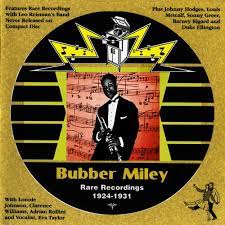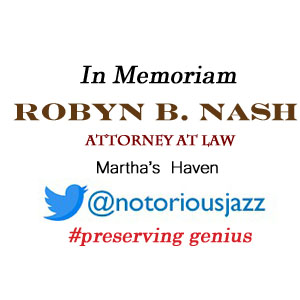
Daily Dose Of Jazz…
James Wesley “Bubber” Miley was born April 3, 1903 in Aiken, South Carolina into a musical family. At the age of six, he and his family moved to New York City, New York where, as a child, he occasionally sang for money on the streets, and later, at the age of 14, studied the trombone and cornet.
In 1920, after having served in the Navy for 18 months, he joined a jazz formation named the Carolina Five, and remained a member for the next three years, playing small clubs and boat rides all around New York City. After leaving the band at the age of 19, Miley briefly toured the Southern States with a show titled The Sunny South, and then joined Mamie Smith’s Jazz Hounds, replacing trumpeter Johnny Dunn. They regularly performed in clubs around New York City and Chicago, Illinois. While touring in Chicago, he heard King Oliver’s Creole Jazz Band playing and was captivated by Oliver’s use of mutes. Soon Miley found his own voice by combining the straight and plunger mute with a growling sound.
Miley’s talent and unique style were soon noticed in New York’s jazz scene by Duke Ellington who wanted him to jump in for trumpeter Arthur Whetsel. His collaboration with Ellington has secured his place in jazz history. Early Ellington hits, such as Black and Tan Fantasy, Doin’ the Voom Voom, East St. Louis Toodle-Oo, The Mooche, and Creole Love Call, prominently featured Miley’s solo work.
After leaving Ellington’s orchestra in 1929, Bubber joined Noble Sissle’s Orchestra for a one-month tour to Paris, France. After returning to New York, he recorded with groups led by King Oliver, Jelly Roll Morton, Hoagy Carmichael, Zutty Singleton and with Leo Reisman’s society dance band. In 1930, he recorded six songs for Victor Records under the name Bubber Miley and his Mileage Makers, a formation of thirteen musicians including clarinetist Buster Bailey.
His alcoholism terminally affected his life. Trumpet and cornetist Bubber Miley who specialized in the use of the plunger mute, transitioned from tuberculosis on May 20, 1932 on Welfare Island in New York City.


